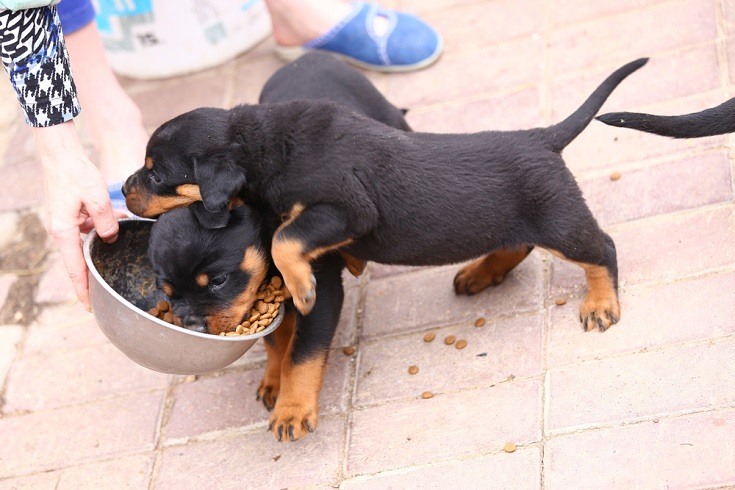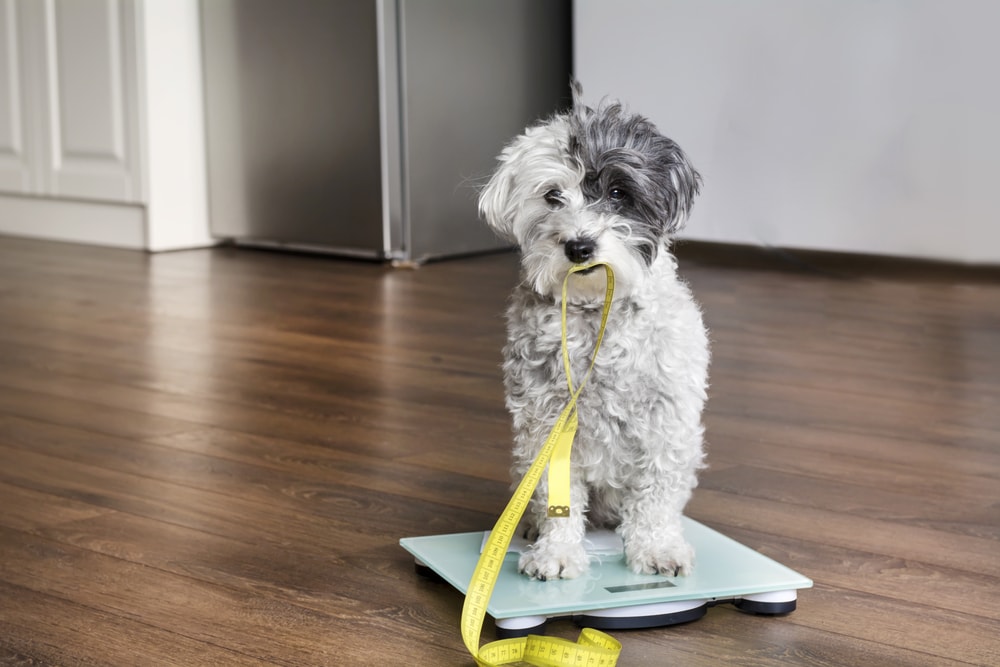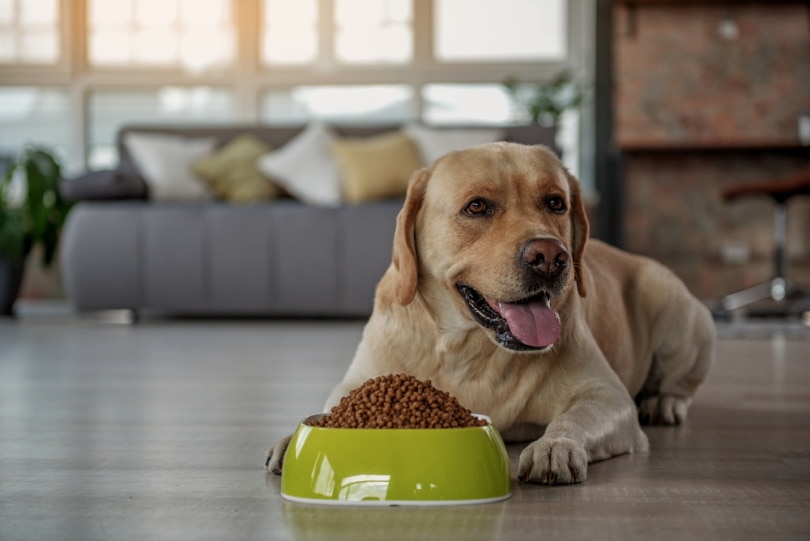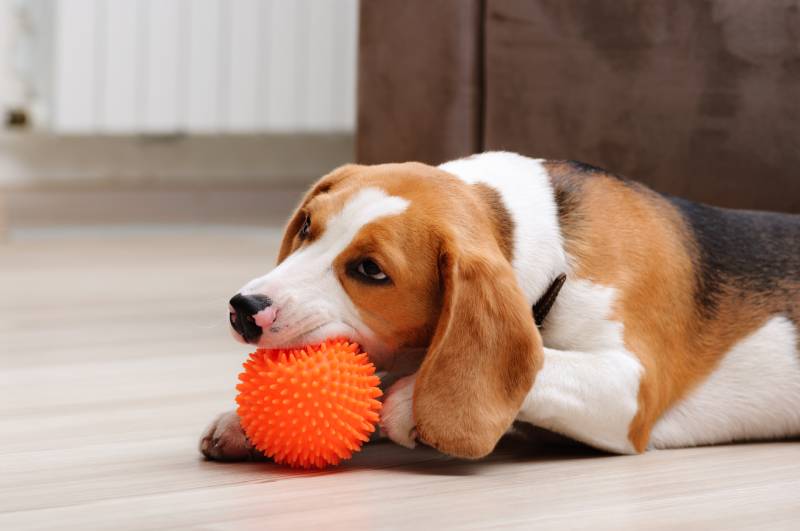Belgian Malinois vs. Rottweiler: The Main Differences (With Pictures)
Updated on
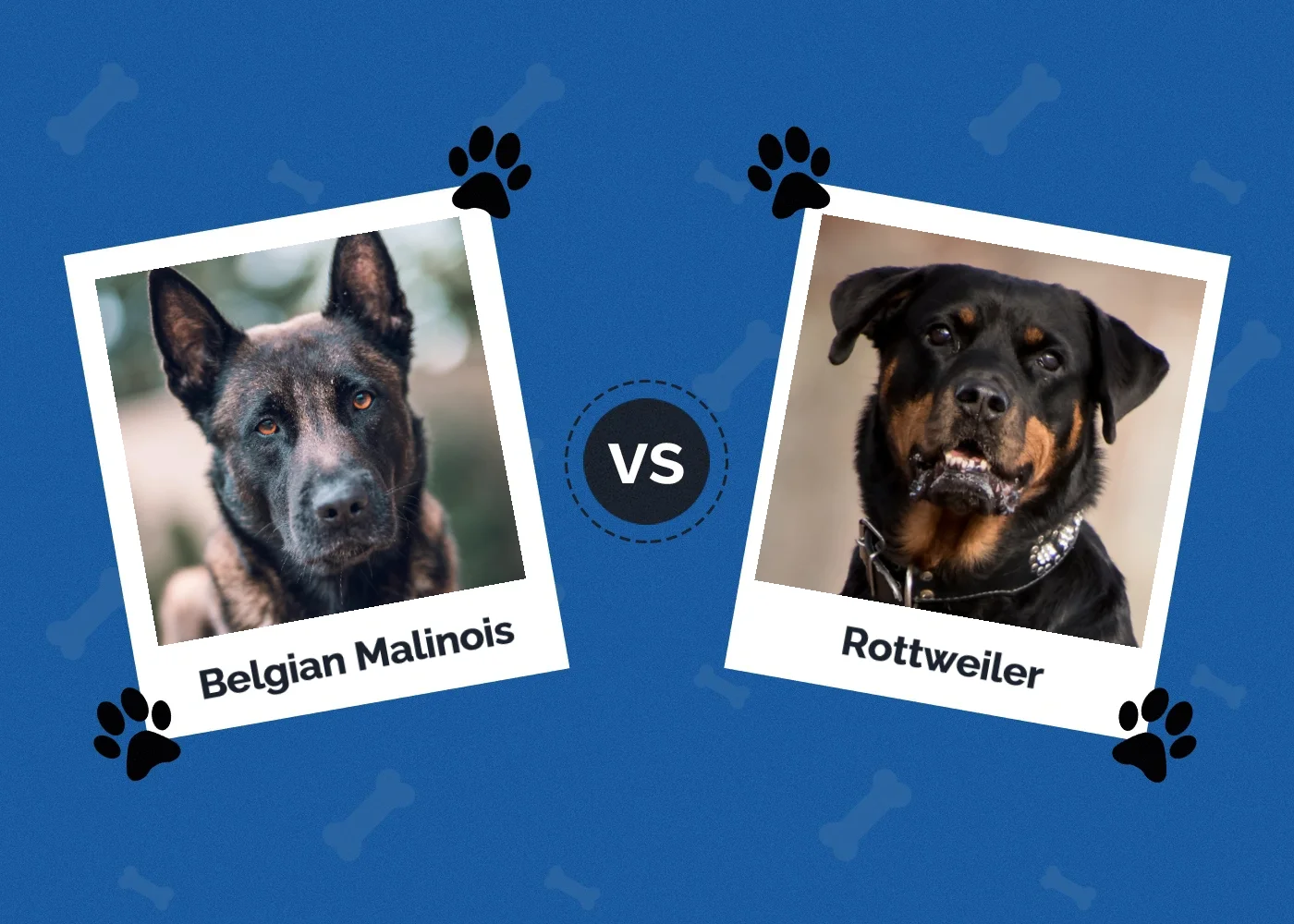
Click to Skip Ahead
Choosing the right dog breed can be time-consuming and confusing, especially when it comes to high-energy breeds such as the Belgian Malinois and Rottweiler. Both breeds are known for their intelligent, loyal, and protective nature. They’re a popular choice for pet owners, police forces, and military personnel for many reasons.
According to the AKC, the Rottweiler ranks as the seventh most popular breed in the US.1 Meanwhile, the Belgian Malinois ranks 32nd. So, there’s no doubt that both breeds are household names due to their family-friendly nature.
If you’re not sure which breed is best for you, you’re at the right place. Keep reading to learn about the characteristics of Rottweilers and Belgian Malinois and make an informed decision.
Visual Differences

At a Glance
- Average height (adult): 22 to 26 inches
- Average weight (adult): 55 to 57 pounds
- Lifespan: 10 to 14 years
- Exercise: 60 to 90 minutes
- Grooming needs: Average
- Family-friendly: Yes
- Other pet-friendly: Yes
- Trainability: Easy
- Average height (adult): 24 to 27 inches
- Average weight (adult): 100 to 130 pounds
- Lifespan: 8 to 10 years
- Exercise: 2 hours
- Grooming needs: Low maintenance
- Family-friendly: Yes
- Other pet-friendly: Yes
- Trainability: Easy
Belgian Malinois Overview
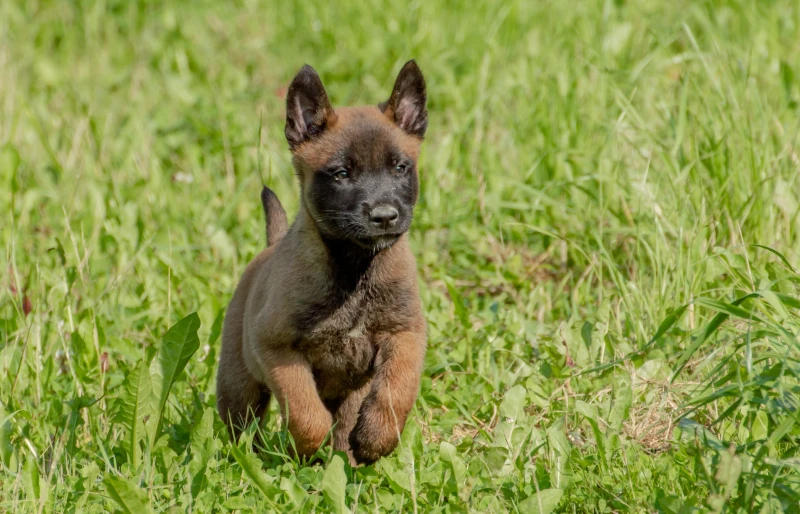
The origin of the Belgian Malinois is evident in its name. The dog was first bred in Belgium in the late 1800s where it herded sheep and worked many other jobs. That includes military work, police work, search, and rescue.
The breed is recognized as one of four varieties of the Belgian Shepherd. The other three variations include the Tervuren, Laekenois, and Groenendael. Today, The Belgian Malinois is adored for its high energy level, intelligence, and trainability.
Personality / Character
The Belgian Malinois is a brilliant and energetic dog with a strong work ethic. They are known for being extremely loyal to their families and protective of their homes and loved ones.
They’re also very social dogs and enjoy spending time with their owners. Still, without the correct socialization, they can be aggressive toward strangers. Due to their intelligence and trainability, the Belgian Malinois excels in obedience and agility training.
Diet
The ideal diet for a Belgian Malinois should be rich in high-quality protein, healthy fats, and complex carbohydrates. It should contain a minimum of 25% protein content in the form of chicken, beef, or fish.
Healthy fats are also essential, providing energy and supporting the immune system. Look for dog food that contains healthy fats, such as omega-3 and omega-6 fatty acids. You can also include complex carbohydrates like brown rice, sweet potatoes, and vegetables.
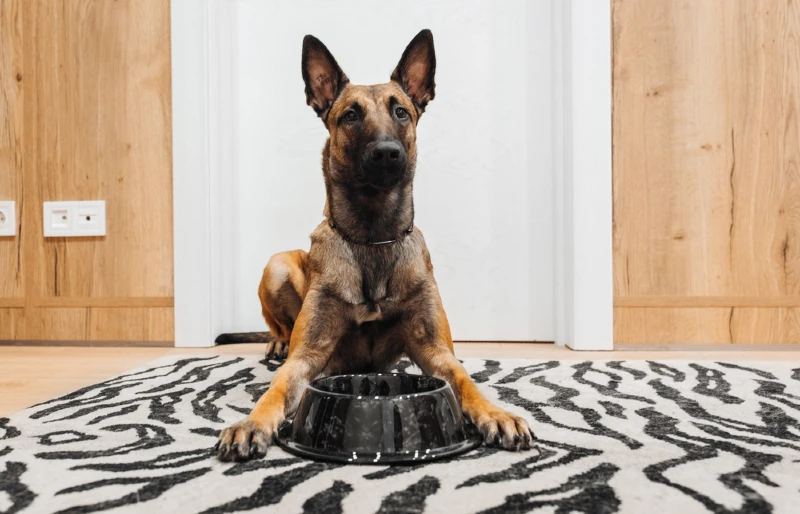
Health and Care
Hip dysplasia and elbow dysplasia are prevalent amongst Belgian Malinois. These are genetic conditions where the hip or elbow joint doesn’t develop fully, causing pain, mobility issues, and lameness.
They are also prone to certain eye problems. That includes cataracts, progressive retinal atrophy (PRA), and glaucoma. Additionally, Belgian Malinois can suffer from epilepsy, causing seizures and allergies. Bloat is a severe condition for this breed, as it can also be fatal.
Training
Training a Belgian Malinois requires patience, consistency, and dedication. These dogs are highly intelligent, energetic, and driven, making them good candidates for various activities. That includes obedience, agility, search and rescue, and police or military work.
Socialization is one of the most crucial aspects of training a Belgian Malinois. Early and frequent socialization can ensure they are comfortable around people and other animals. This way, you can reduce the risk of aggression and fearfulness.
Basic obedience training is also crucial for the Belgian Malinois, who is known to be independent and strong-willed. Training should begin at an early age and should be consistent and positive.
Positive reinforcement methods, like treats or praise, are highly effective with Belgian Malinois. Because they are energetic dogs, training should also include plenty of exercises.
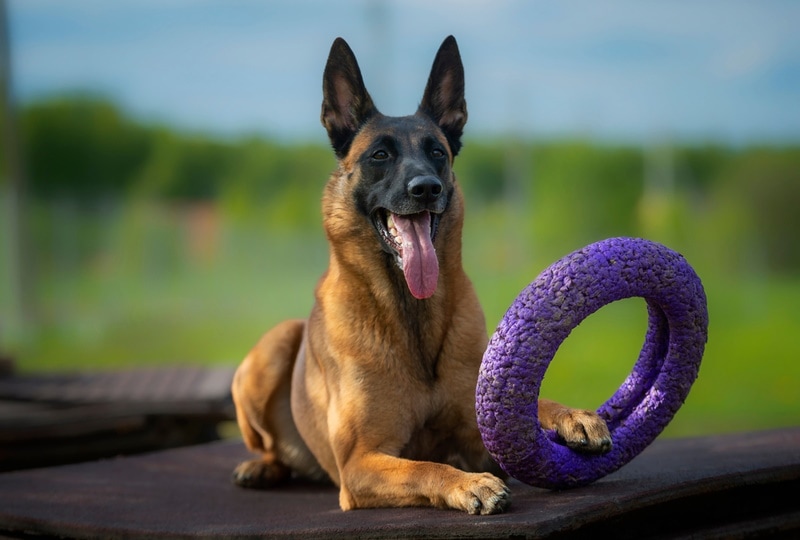
Exercise
Belgian Malinois are a highly active breed that requires a lot of exercise to stay healthy and happy. On average, a Belgian Malinois needs at least 2 hours of daily exercise.
This can be broken up into multiple play sessions, walking, running, or other activities that allow them to release their energy. These dogs thrive on mental and physical stimulation. So, regular exercise can help prevent boredom and destructive behaviors such as chewing or digging.
Belgian Malinois also enjoy activities that challenge them mentally. That includes obedience training or agility.
Grooming
The Belgian Malinois has a short, dense coat that requires minimal grooming. They shed seasonally, with heavy shedding occurring twice a year. A slicker brush can help remove loose hair and prevent mats from forming during the shedding season.
Bathing should be done as needed, usually every few months. We recommend using a mild dog shampoo to avoid drying out their skin. Additionally, Belgian Malinois have upright ears that should be checked for debris or infection.
Their teeth should be cleaned regularly to prevent tartar buildup and maintain good dental hygiene. Lastly, their nails should be trimmed periodically to prevent overgrowth and discomfort.
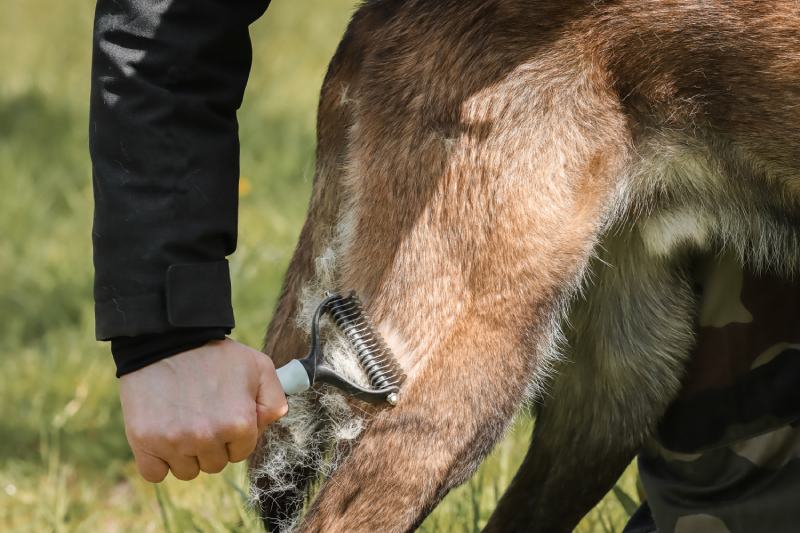
Suitable for:
The Belgian Malinois is the ideal pet for families who have experience with active and intelligent dog breeds. They demand daily exercise, mental stimulation, and consistent training, so an active home is ideal.
Belgian Malinois are also loyal and protective of their owners, making them a good choice for those seeking a guard dog. These dogs are not ideal for first-time owners or those with a sedentary lifestyle.
- Trainable and athletic
- Loyal and affectionate
- Intelligent and alert
- Can be trained for police or rescue work
- Low-maintenance coat
- High exercise needs
- Strong prey drive
- Prone to certain health issues
- Not ideal for apartment living
Rottweiler Overview
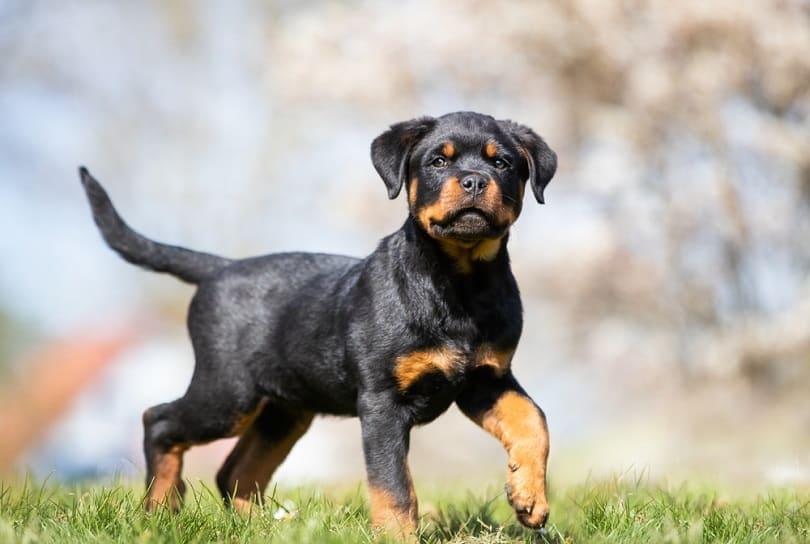
The Rottweiler originated in a town named Rottweil in Southern Germany. It’s said that the Romans brought over this breed’s ancestors as herding dogs. Rottweilers pulled carts, herded cattle, and worked for the police due to their high intelligence.
In the late 1800s, the breed nearly went extinct but was saved through careful breeding programs. Today, the Rottweiler continues to work as a military, police, and search and rescue dog. As family dogs, they’re valued for their strength, intelligence, and loyalty.
Personality / Character
The Rottweiler is a loyal, confident, and courageous breed. They are known for their strong protective instincts and loyalty to their families, making for excellent guard dogs. Rottweilers are also intelligent and trainable, which makes them well-suited for police and military work.
However, Rottweilers can be wary of strangers and become aggressive if not properly socialized. Proper training and socialization allow Rottweilers to be great with children and other animals.
Diet
The ideal diet for a Rottweiler should consist of high-quality protein, complex carbohydrates, and healthy fats. They need a diet with enough energy to sustain their physical activities. That means it should have a minimum of 22% protein content.
Healthy fats, such as omega-6 and omega-3 fatty acids, are also important in the form of fish or flaxseed oil. It’s essential to monitor the amount of food they consume, as Rottweilers can be prone to obesity.
Health and Care
Rottweilers have a lifespan of 8 to 10 years, shorter than many other breeds. That’s because they are predisposed to certain health issues.
Hip dysplasia and elbow dysplasia are common amongst Rottweilers. These are genetic conditions where the hip or elbow joint doesn’t develop fully, causing pain, mobility issues, and lameness.
Rottweilers are also vulnerable to bloat. In this condition, the stomach twists and results in life-threatening symptoms. Additionally, Rottweilers are prone to certain types of cancer, including osteosarcoma and lymphoma.
Monitoring their weight can help prevent obesity and other weight-related issues in Rottweilers.
Training
Training a Rottweiler also requires patience, consistency, and positive reinforcement. Rottweilers are incredibly smart and eager to please. That’s why they’re the ideal candidates for obedience training. But they can also be strong-willed and stubborn. So, training should be done with a firm yet gentle hand.
One of the most essential aspects of training a Rottweiler is socialization. Early socialization can help prevent fearfulness or aggression toward other people and animals. Basic obedience training is also important for any dog, including Rottweilers.
Training should begin early, with positive reinforcement methods being the most effective. Using treats or praise as rewards can help motivate your Rottweiler to learn. It’s also a great way to reinforce good behavior and obedience.
Rottweilers are energetic dogs who enjoy regular exercise. So, their training should include plenty of walks and playtime.
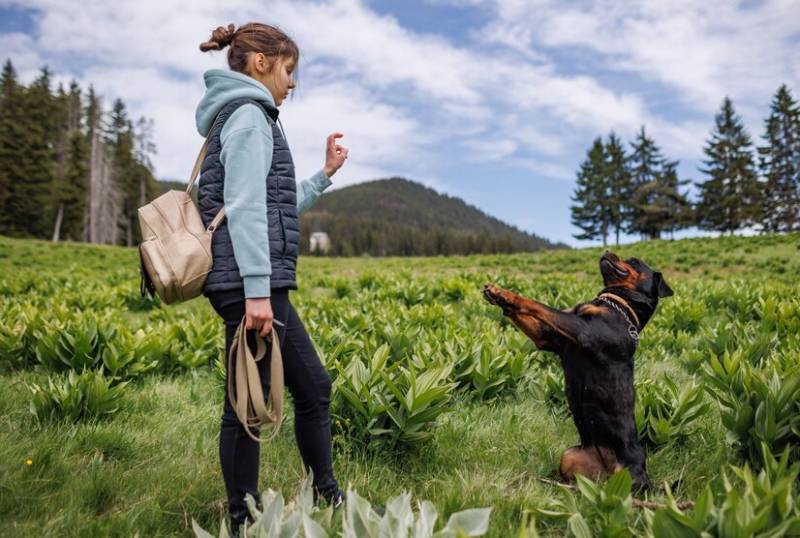
Exercise
Rottweilers are also large and active, like the Belgian Malinois. There’s no doubt that they require tons of daily exercise to stay healthy and happy. On average, a Rottweiler needs at least 1 to 2 hours of exercise every day.
This can include a combination of walks, runs, playtime, and other activities that allow them to burn off energy. These dogs are also intelligent and benefit from mental stimulation. You can provide it through obedience training, puzzle games, and interactive toys.
It’s important to note that Rottweilers have a tendency towards obesity. So, regular exercise and a healthy diet are crucial to prevent weight gain.
Grooming
Rottweilers have a short, thick coat that is relatively easy to maintain. They shed moderately throughout the year, with heavier shedding occurring twice every year. Regular brushing with a slicker brush can help remove dead hair and prevent mats.
While bathing, it’s best to use mild dog shampoo to avoid drying out their skin. You should also check their ears for debris or infection. Their teeth should be cleaned regularly to prevent tartar buildup and maintain good dental hygiene.
Lastly, their nails should be trimmed regularly to prevent overgrowth and discomfort. It’s also important to note that Rottweilers have a tendency toward ear infections. These infections are hard to detect due to their floppy ears.
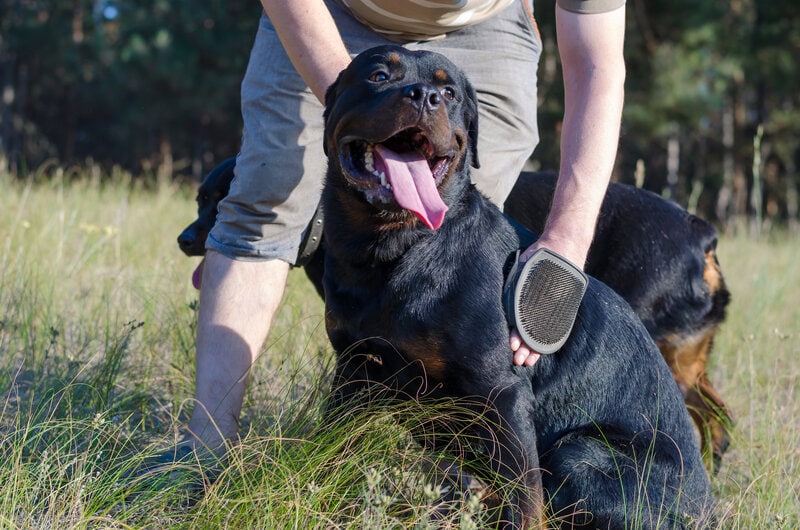
Suitable for:
The Rottweiler is ideal for families with experience with large, powerful breeds. To own this dog, you must be willing to dedicate time to training and socialization. Rottweilers have an instinct to protect their loved ones, making them a good choice for those who need a guard dog.
They’re also known for their intelligence, making them suitable for owners who enjoy training their dogs. However, they are not recommended for those with a sedentary lifestyle since a lack of exercise leads to destructive behavior in Rottweilers.
- Loyal and protective
- Intelligent and trainable
- Can be trained for military work or therapy
- Low-maintenance coat
- Good with children
- Stubborn in training
- Aggressive tendencies
- Can be destructive
- Not ideal for apartment living
- High exercise needs
Which Breed Is Right for You?
Belgian Malinois and Rottweilers are highly intelligent, active, and loyal breeds that can make great companions. However, the two breeds also differ in various ways, making the decision easier.
Belgian Malinois are often used as military and police dogs due to their high energy level, intelligence, and trainability. They are also great for active owners who enjoy outdoor activities. That includes hiking, running, or agility training.
Rottweilers are known for their protective nature and loyalty to their families. They are highly intelligent and can be trained for various jobs. However, their large size may not be suitable for apartment living.
Ultimately, the decision between a Belgian Malinois and a Rottweiler should be based on your lifestyle and preferences. A Belgian Malinois may be a good fit for an active person looking for a highly trainable and energetic dog. If you are looking for a devoted and family-friendly companion, a Rottweiler is all you need.
See also:
Featured Image Credit: Left – Belgian Malinois (Jozef Fehér, Pexels) | Right – Rottweiler (RebeccasPictures, Pixabay)


